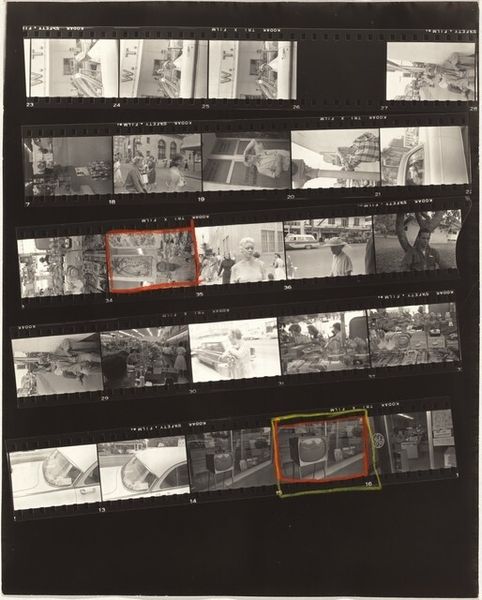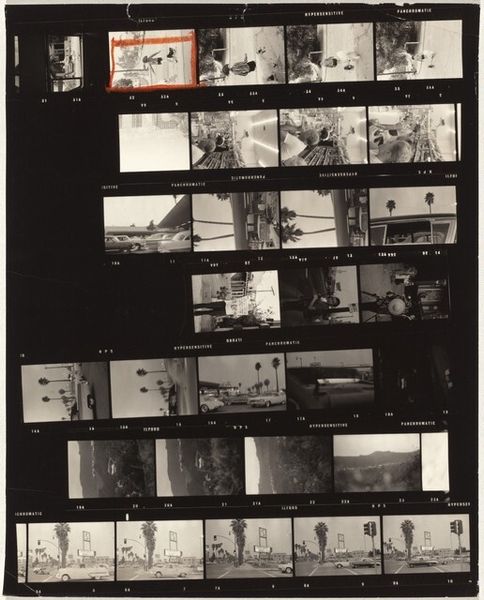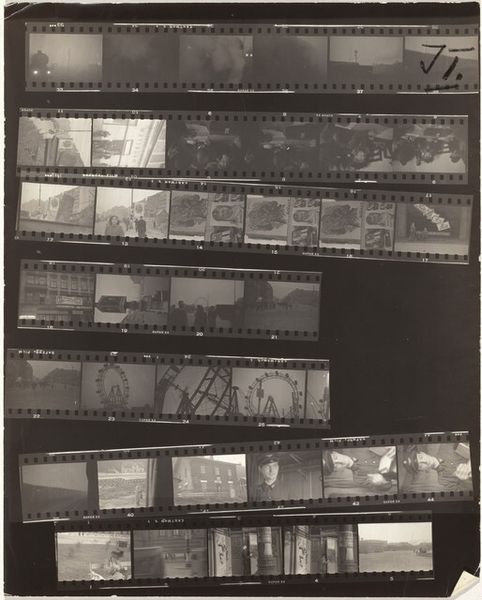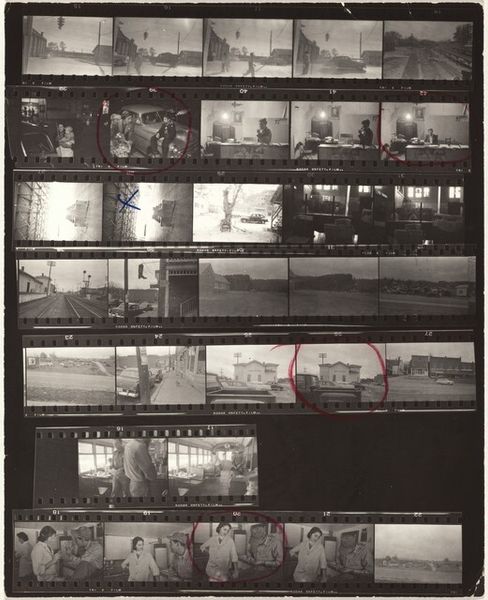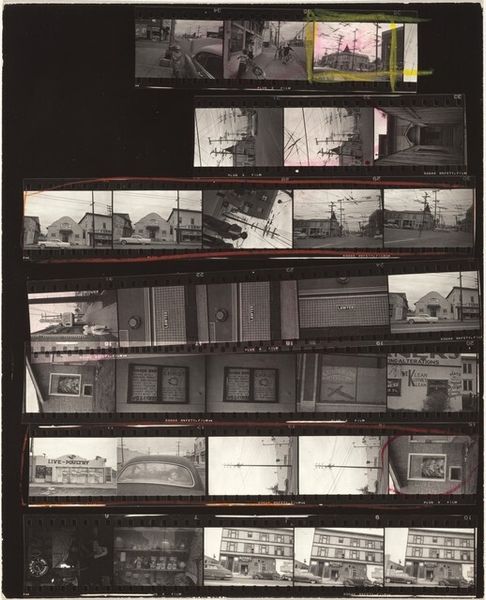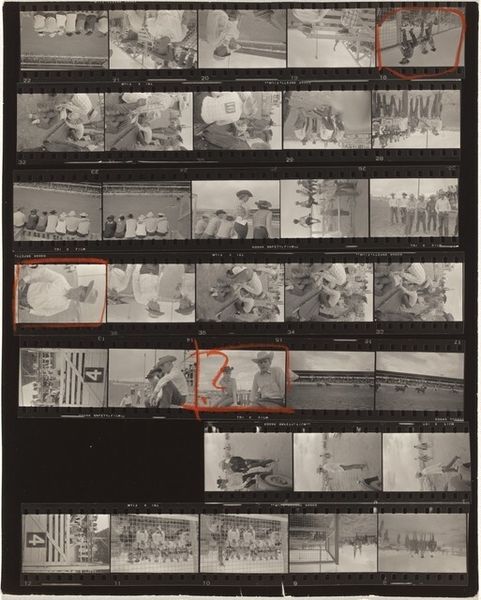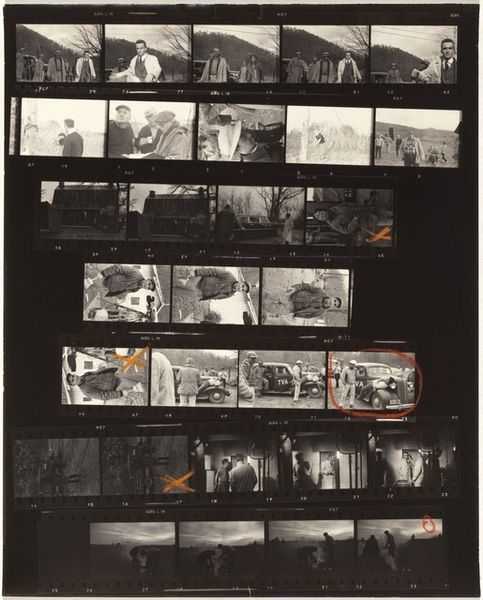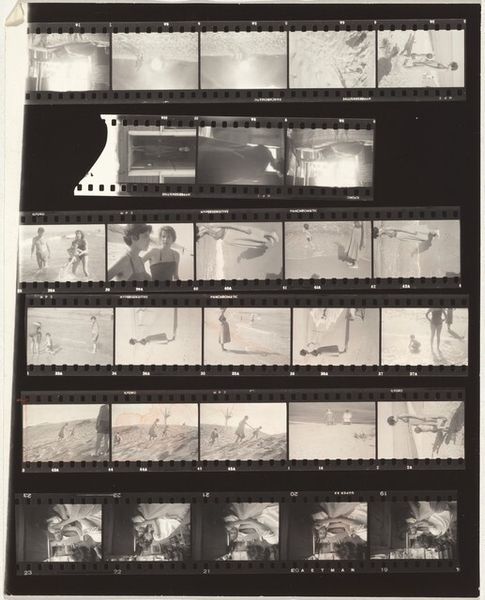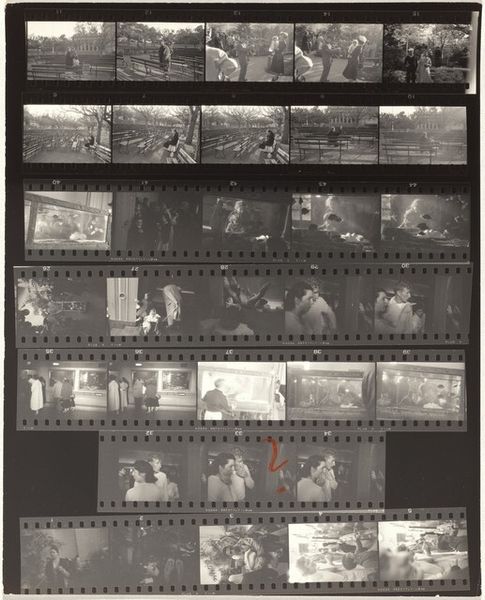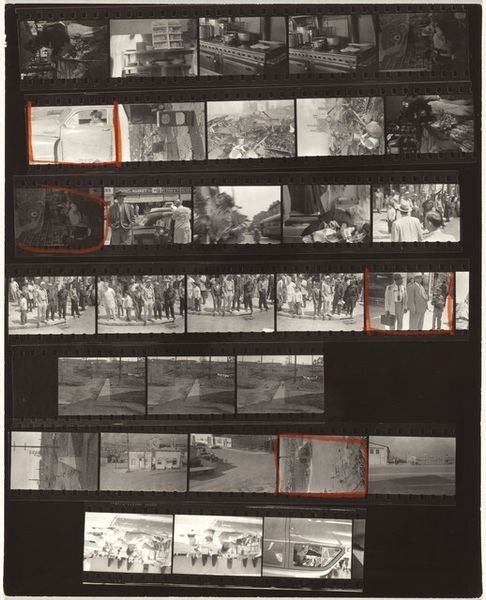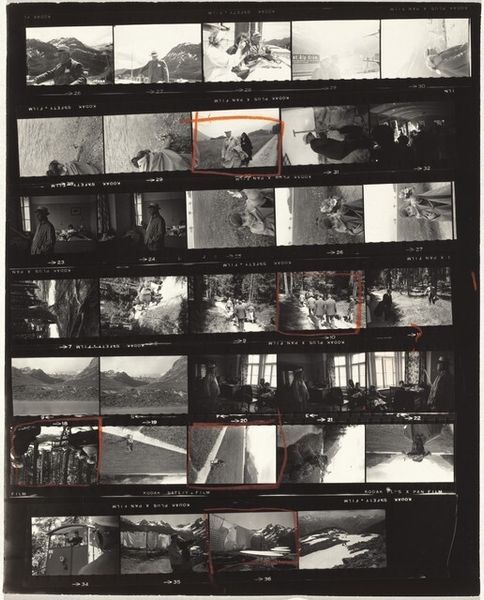
Dimensions: overall: 25.3 x 20.2 cm (9 15/16 x 7 15/16 in.)
Copyright: National Gallery of Art: CC0 1.0
Editor: Here we have Robert Frank's "Family, Provincetown-Chicago F," a gelatin silver print from 1953. It’s essentially a roll of film, complete with sprocket holes and what looks like contact sheets. It's like a window into the artist’s process – and I must say the variety of images leaves me a bit puzzled. How do you interpret this work? Curator: Well, considering the historical context of photography and its acceptance into the art world at the time, this piece acts as a direct challenge to conventional, carefully constructed imagery. By presenting what seems like a raw, unfiltered look at his photographic process, Frank blurs the line between art object and documentation. It also opens up questions of access and control—who gets to create images and what do those images show us about the culture they depict? What effect do you think it had on its contemporary audiences to see this rawness presented as "art"? Editor: I can see how it might have shaken things up. The images themselves seem quite ordinary—roadscapes, portraits, some kind of installation. It makes it feel accessible somehow. Did this accessibility play a part in the photography and art scene in that period? Curator: Absolutely. This aesthetic choice ties into the socio-political landscape of the post-war era, pushing back against idealized images and giving more weight to everyday life, challenging viewers' preconceived notions. Editor: So, the piece itself acts as commentary by inviting discussion about image production? Curator: Exactly! By including elements typically excluded from final art pieces, Frank questions not just what is deemed worthy of being photographed, but also who has the power to decide what's art in the first place. Editor: That’s fascinating. It makes you realize that every artistic choice—even seeming randomness—is a statement in itself. Curator: Indeed. And the legacy of such work echoes in art today, questioning institutions, power and who shapes culture.
Comments
No comments
Be the first to comment and join the conversation on the ultimate creative platform.
